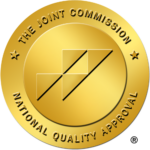Pros and Cons of Suboxone in Medication-Assisted Treatment
Medication-assisted treatment (MAT) with Suboxone has emerged as a pivotal approach in the battle against opioid addiction, blending pharmacological intervention with behavioral therapy to forge a comprehensive path towards recovery. Suboxone is a combination of buprenorphine and naloxone lauded for its efficacy in curbing drug cravings and mitigating withdrawal symptoms. When Suboxone is used as part of a substance use treatment plan, it can facilitate a smoother detox process and enhance the likelihood of long-term sobriety. However, as with any medication or treatment, patients should weigh both the advantages and potential drawbacks to make an informed decision tailored to individual recovery goals.
Pros of Suboxone in MAT
1. Effectiveness: Suboxone has been proven to significantly decrease drug cravings and physical dependence on opioids, which is a cornerstone for recovery. It reduces the chance of experiencing uncomfortable or harmful withdrawal symptoms, making the detox phase more bearable.
2. Lower Abuse Potential: Compared to methadone, Suboxone has a lower potential for abuse and dependency, classified as a Schedule III controlled substance by the DEA, which denotes a moderate to low risk of dependence.
3. Accessibility and Success Rate: Suboxone is widely accessible and has demonstrated a high success rate in treating opioid dependence, offering a viable option for individuals seeking recovery.
Cons of Suboxone in MAT
1. Physical Dependence Risk: While Suboxone is effective in treating opioid addiction, there is a risk of becoming physically dependent on this medication itself, particularly if it is abused or not used as prescribed.
2. Side Effects and Long-Term Use Concerns: Potential side effects associated with Suboxone include depression, anxiety, decreased pain tolerance and social isolation. Individuals who rely on Suboxone long-term may be more likely to struggle with financial issues, legal problems and damaged relationships.
3. Withdrawal Symptoms Upon Cessation: Discontinuing Suboxone after prolonged use can induce withdrawal symptoms, necessitating a well-managed detox process to mitigate these effects and support the transition to drug-free recovery.
Navigating Recovery with Suboxone
The decision to incorporate Suboxone into one’s recovery journey should be made in collaboration with healthcare professionals while considering both the individual’s medical history and the specific challenges of their addiction. Integrating Suboxone within comprehensive treatment plans that include psychological support and therapy can help address not only the physiological aspects of addiction but also the underlying psychological factors.
Recovery from opioid addiction is a multifaceted process that requires addressing both physical dependence and mental health conditions. As part of a broader MAT approach, Suboxone can offer a lifeline to those struggling with addiction, providing a bridge to a life free from substance dependency. However, it’s important to remember that medication is a tool, not a cure-all. Successful recovery hinges on a holistic approach that includes therapy, support groups and a commitment to long-term behavioral change.
For individuals grappling with opioid addiction, the path to recovery may be daunting, yet with the right support and treatment options like Suboxone, achieving sobriety and reclaiming a healthy, fulfilling life is within reach.





